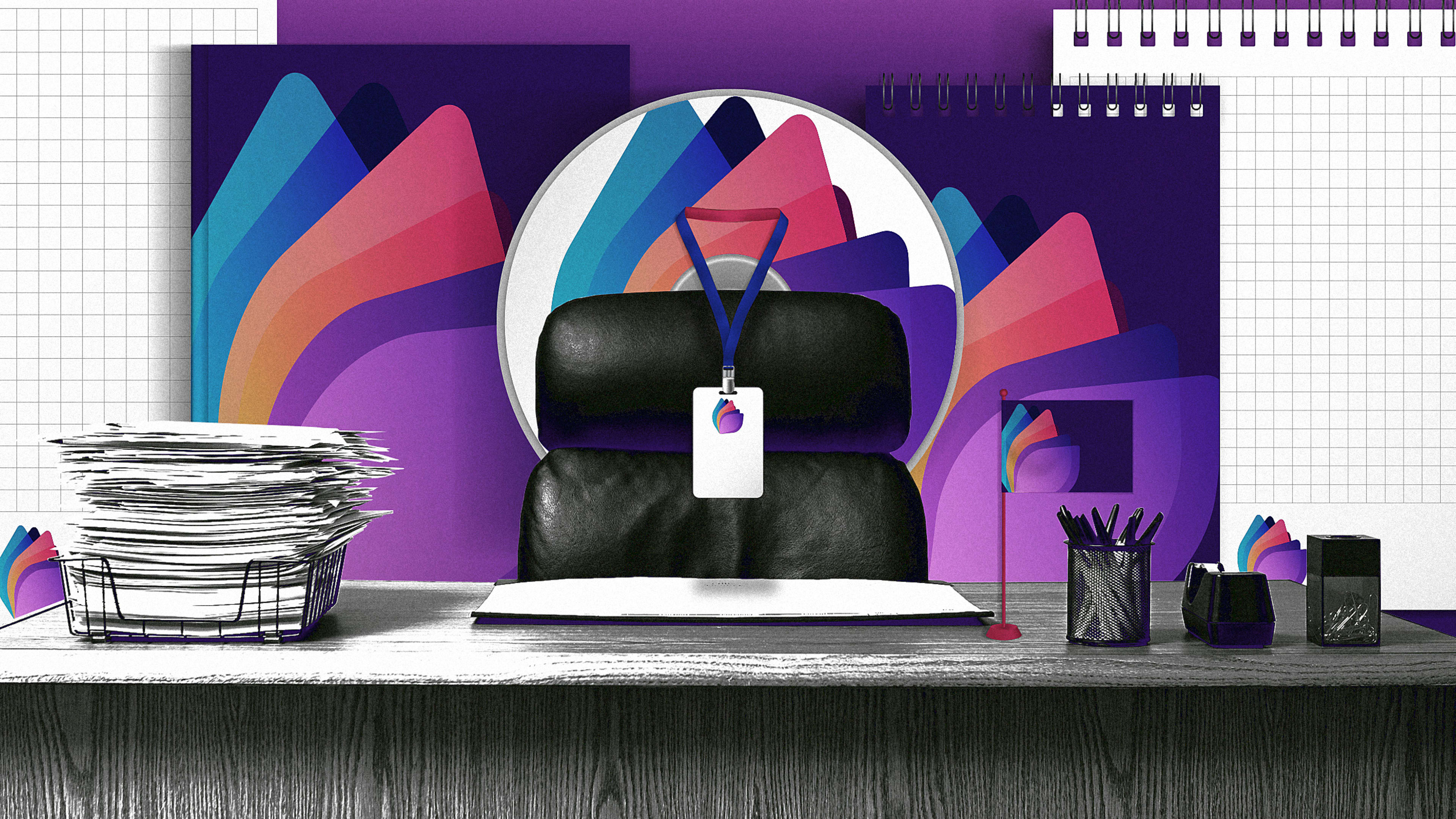Recently, while presenting our new brand expression to the entire company, it hit me that although people loved the way it looked, there was a high probability that this audience of hundreds of very technical individuals didn’t fully grasp why so much strategy, effort, and time went into the visuals I was sharing.
So I paused and reached for the most basic metaphor I could muster mid-presentation: This new brand was our new wardrobe, and similar to how a tailored suit or dress might make you feel like a million bucks, this new brand was our confidence and maturity embodied. Suddenly, this brand could do for a business what clothes do for so many people: telegraph values and emotions, and put the wearer in the zone. In short, the brand would partially communicate our innovative, premium, matter-of-fact approach by just being.
I bring this up because visual expression can so many times be reduced to a simple vehicle for marketing purposes. People can forget that often the stickiness of that messaging is directly correlated to the relevancy of the package in which it arrived. Yes, generic will do. Eventually. But a machine built-for-purpose that leverages the functional and emotional benefits of your products will do faster, and over longer periods of time. (Hint: I’m talking about lifetime value, or LTV.)
While enterprise SaaS is not known for its risk-taking or trendsetting, generative AI, on the other hand, is the trend. Suddenly the future is here, and believe me, it’s an emotionally charged future that currently inspires different perspectives and feelings. While many consumers fear generative AI, more than 75% of them also believe that it will vastly improve their interactions with brands. It’s understandable that public opinion is split since the subject is so new.
Even with all of this newness and possibility, generative AI has to contend with SaaS’s predilection for middle-of-the-road, “gentle” design. In an effort to be clean and concise, companies have become underwhelming in their visual expression, and same-same except for their color palettes—which are some version of blanket blue or relaxed red. Need some dynamism but don’t want to upset anyone? Monotone gradient it is! Round the corners, keep it light, and leave room for gobs of gab. Between futurist meh stock and don’t-annoy-anyone gradients exists a gulf of sameness with barely any differentiation.
Why do most B2B brands deny employing the same strategies that turn commodities into brand names? I’d wager because it feels like a non-spreadsheet shamanic magic that people like me have somehow learned to wield. It is partly that, but it’s also partly perspective.
DISTILLING YOUR DIFFERENCE
I’ve written about this before, but any business worth its salt needs to understand its inherent differences. If we look closely at businesses that are commodities (or wear a similar wardrobe), the number-one way they command loyalty and control market share is by allowing their unique perspective to permeate their products, platforms, and marketing—their capital “B” brand.
Companies like Coke, Delta, Best Buy, and McDonald’s create incredible products and experiences and then allow the DNA that created those innovations to bleed into their go-to-market strategy. Yes, they’ve got bespoke programs and platforms, but those elite experiences are symptoms of a strong customer-centric and differentiated brand. Otherwise, any soda, airline, big-box retailer, or burger would do.
The Coke wave, the Delta chevron, and the golden arches of McDonald’s are indelible experience stage-setters in our collective consciousness. We’ve come to learn what they mean. But if you think back to the first time you saw them, the expectation was implicit before the experience began. These iconic visuals drive sales; that’s been conventional wisdom for a while, and it’s hard to argue with. But then, it’s up to the brand to deliver on the expectation: According to 63% of U.S. consumers, the best brands exceed expectations across the customer journey.
NEXT, FIND YOUR VIBES
Reinventing the wheel and becoming an absolute legend is always the preferred path. But unless you’ve got crazy cash, the best teams, and the patience to make it singular, then start by leveraging a little built-in perspective. While my company’s redesign leaned into Swiss Futurism for its confident hierarchy, palette, and typography, there are hundreds of styles of graphic representation to choose from to elevate your difference.
Let me be clear here: I’m not encouraging style-jacking or visual appropriation. We’ve all seen brand clones and misses in visual matchmaking. I’m reminded of Miracle Whip’s Tone It Down campaign, which actually pissed people off because the brand hijacked the anti-establishment cultural movement—punk rock—to sell “not-mayo.” There was definitely a problem with the strategic insight for the spot, but the in-your-face editing, grungy mayo font, and growling guitars had zero connection to the actual experience of using Miracle Whip.
What I’m encouraging brands to do is roll up their sleeves and get acquainted with the myriad ways visuals can communicate. Museums, awards show archives, libraries, and even Pinterest are wildly accessible. After you’ve done the work and gotten appropriately inspired, hire specialists in the style you feel matches your expression best. Additionally, if a living artist inspires you and your team, then hire that artist. Just remember that your actual brand DNA has to match the DNA of the style you’re incorporating.
BE BOLD OR BE GONE
I’ll keep my closing simple and short: Commit. Be brave and stay true to the strategy that got you to this moment. Become immovable when it comes to your expression so that your brand can become immutable in market. Numbers will go up, down, and stagnate at different times, but you can’t. The brands you love in your consumer life and the brands you champion through procurement, legal, and security reviews all have one thing in common: They consistently pass the vibes test.
Recognize your brand’s excellence by applying to this year’s Brands That Matter Awards before the final deadline, June 7.
Sign up for Brands That Matter notifications here.
